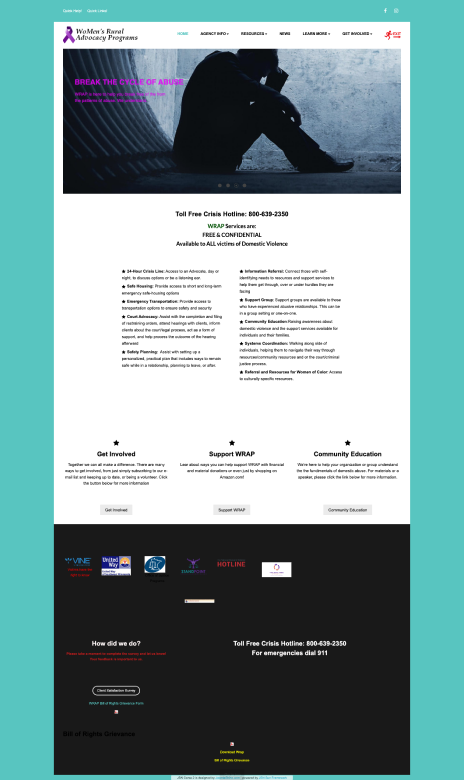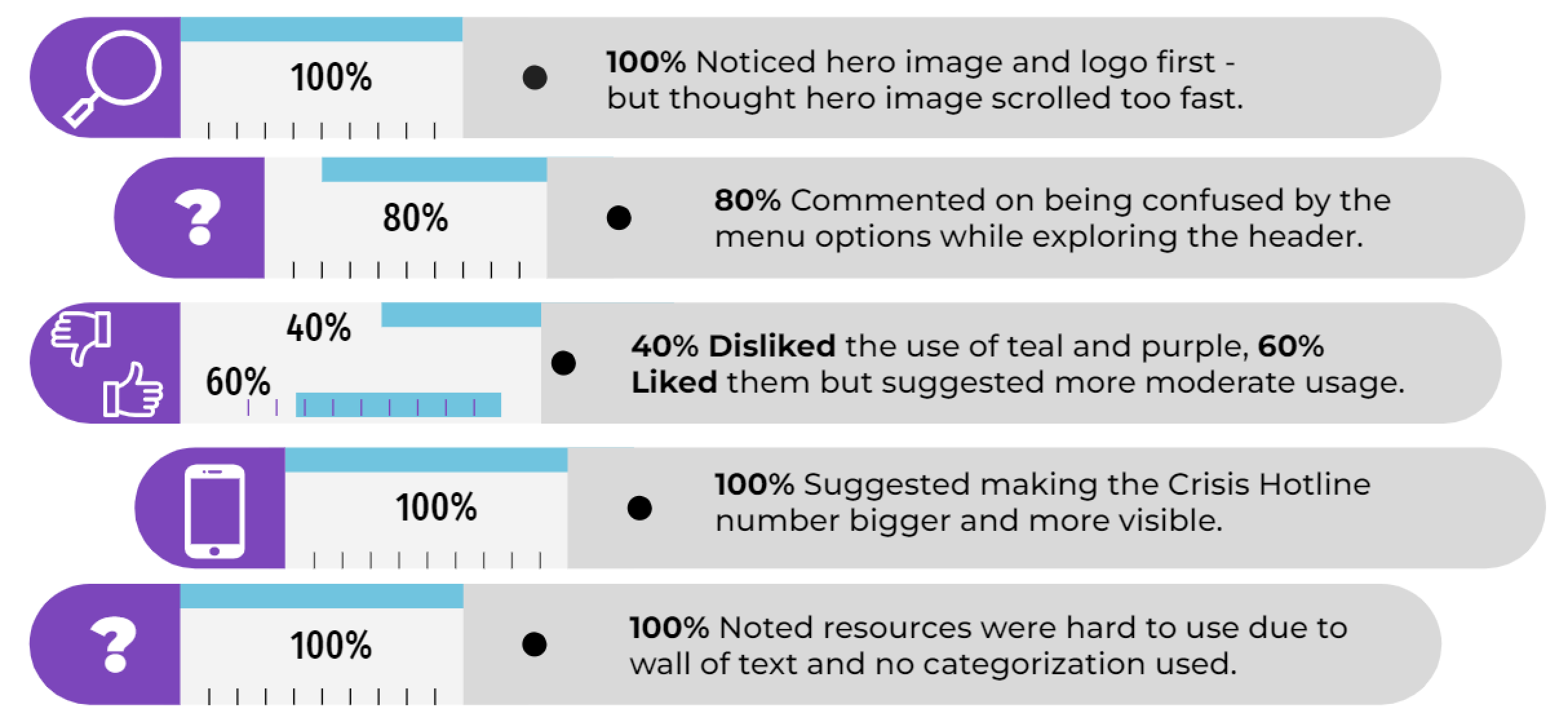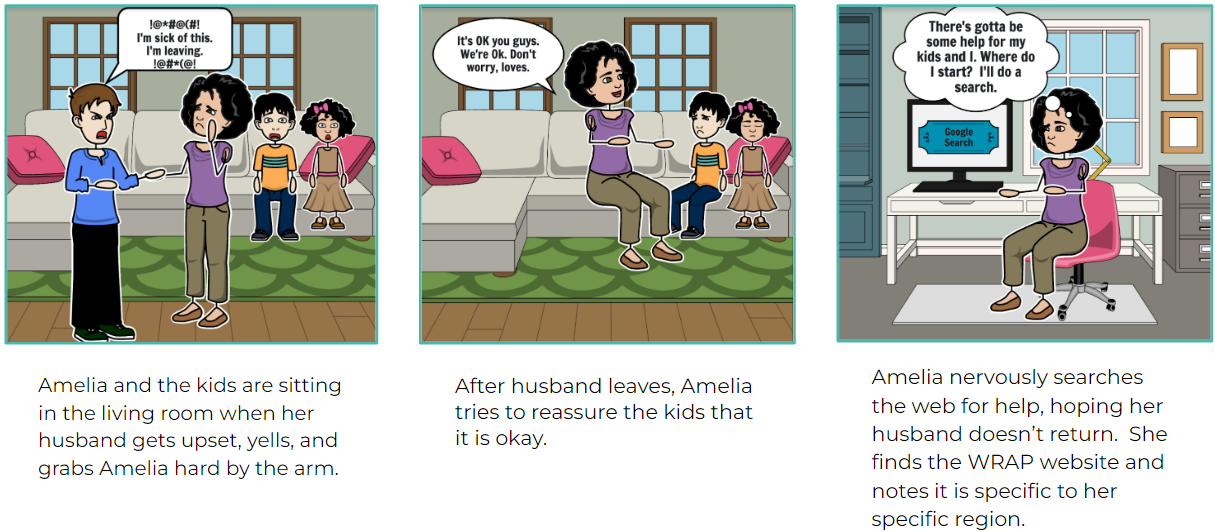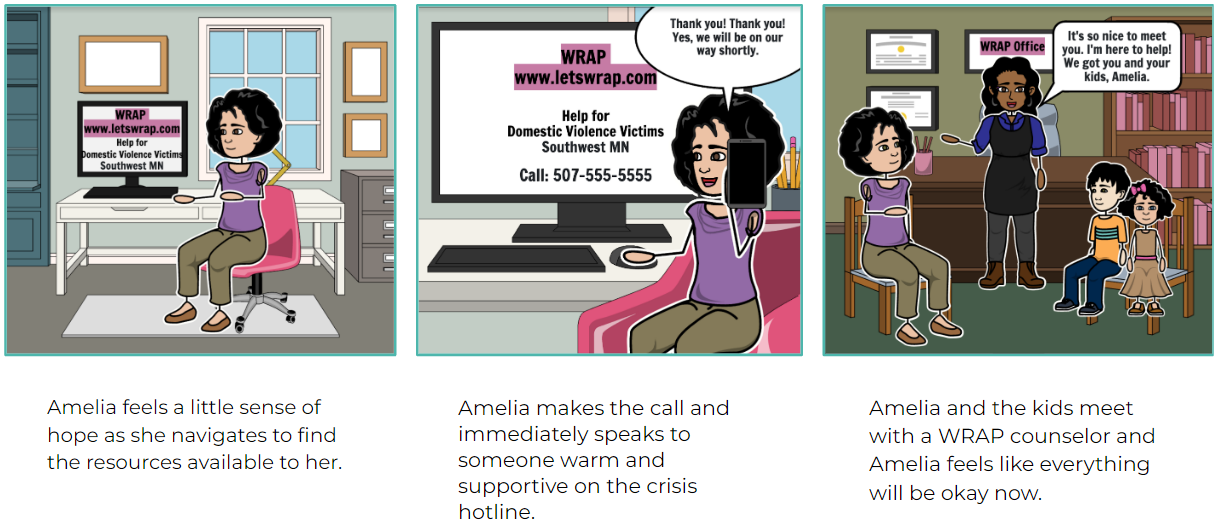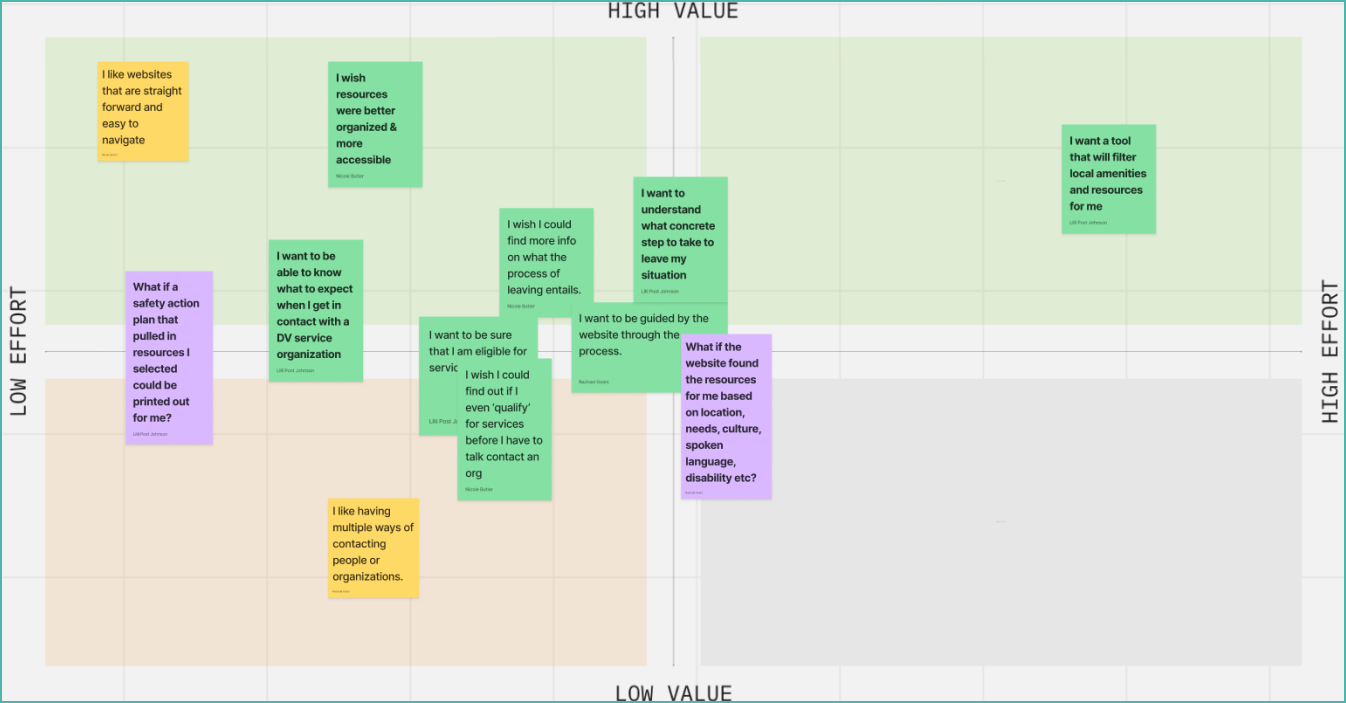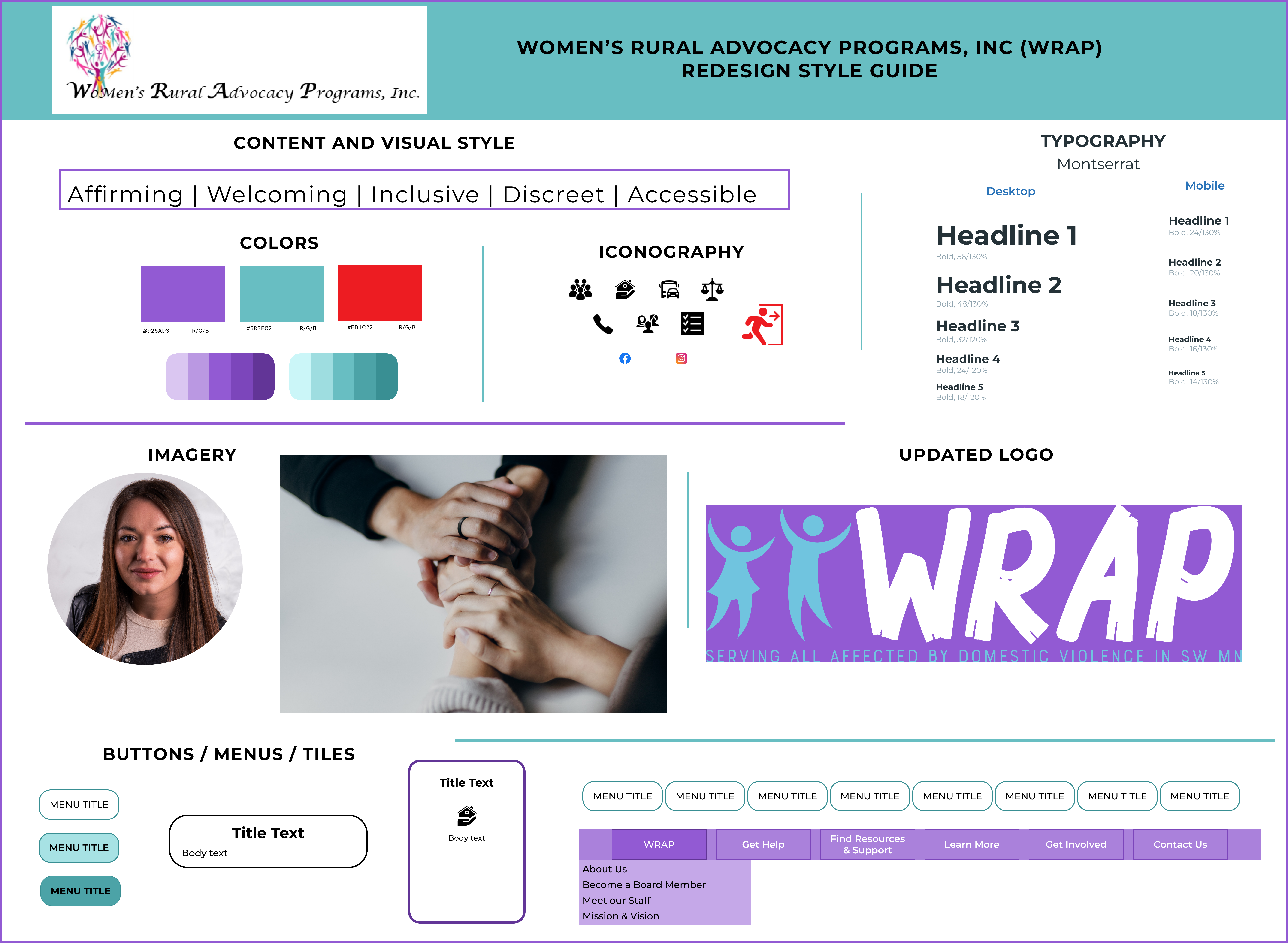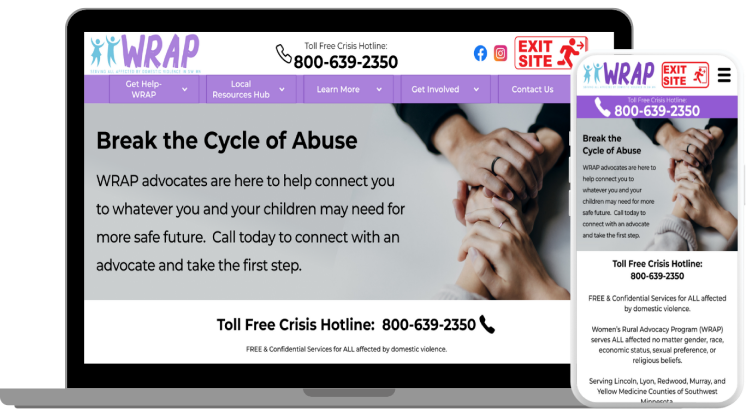
Overview:
Responsive Website Redesign of Non-Profit WRAP (WoMen's Rural Advocacy Programs).
Problem:
Persons experiencing domestic violence feel overwhelmed and intimidated when trying to leave an abusive relationship. They need to be able to easily access local resources that help them take the first step in leaving. This can be even more challenging in rural areas with less resources available.
Solution:
A human centered approach using the design process - empathize, define, ideate, test - to provide a more intuitive and efficient solution for users of the WRAP website.
Role:
UX/UI Designer on a team of three.
